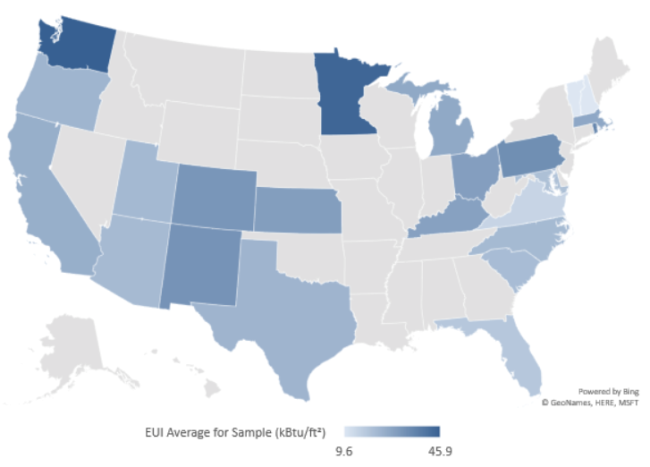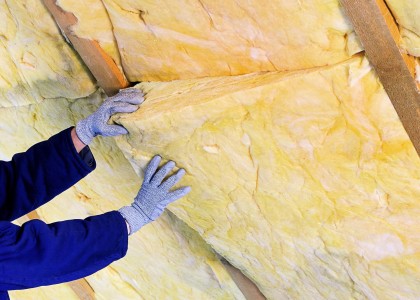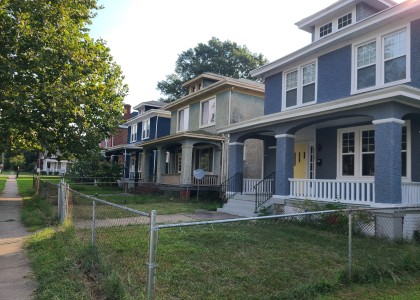Across the United States, an increasing number of schools generate as much energy each year as they use, and upcoming research shows that such “zero energy” schools can reduce costs and be built on a conventional budget.
These schools are the topic of a paper to be released next week at the virtual Summer Study on Energy Efficiency in Buildings, which begins Monday. Only registered attendees will have access to this research, along with more than 400 other Summer Study papers on a range of energy-saving technologies, programs, policies, and behaviors.
Register for Summer Study Buildings
“When you talk about zero energy buildings, including schools, the immediate response is that I cannot afford that or it is too expensive,” says Paul Torcellini, principal engineer at the National Renewable Energy Laboratory. Yet, he finds otherwise in a Summer Study paper co-authored with Nathanial Allen at the U.S. Department of Energy and Maureen McIntyre of McIntyre Communications.
They analyzed 88 schools across the United States that are zero energy (ZE) or zero energy ready (ZER). They found that investing in these primary and secondary schools — now the largest category of ZE buildings in the United States — pays off. To learn more, we asked Torcellini to discuss the findings of their Summer Study paper, “Plowing Through the Cost Barrier: Zero Energy K-12 Schools for Less.”
Here are excerpts of our conversation:
What did you learn about the costs and viability of these very energy-efficient schools?
We found that not only can ZE schools be designed and built on conventional school budgets, they can cost less. In an integrated design and construction process, the cost of ZE measures can be offset by, for example, downsizing heating, ventilating, and air-conditioning systems, reducing both life cycle costs and first costs.
Just the fact that we found almost 90 schools that have good to great EUIs (energy use intensities) is impressive. The analysis shows almost no correlation to cost, but a huge amount of scatter. What does that say? That some schools are very inexpensive and can hit the ZE/R target. Some of the most expensive schools also had large EUIs.
The target EUIs for zero energy ready schools are in the low 20s (kBtu/ft2). This is about 42% better than new schools built to ASHRAE Std. 90.1-2016, which few jurisdictions have adopted as the energy code. What is important is that there are several schools operating in the high teens for an EUI and several in the low 20s. The message is that it is possible, and our sample set is not an isolated case.
Figure 1. Eighty-eight ZE or ZER schools around the United States, including average energy use intensity (EUI) for each state. (A lower EUI, often calculated as energy per square foot, indicates better efficiency). Source: U.S. Department of Energy
Where in the United States are ZE schools the most common?
Kentucky. It started with a county school board that wanted to minimize long-term costs (which included the capital/bonding). Working with an engineer and architect, they made it work. Those firms have replicated the process and successfully created ZE schools across their portfolio of projects.
How much does a solar photovoltaic (PV) array increase a ZE project's costs?
This is a fascinating story. The cost of PV has plummeted in the past 15 years. Designers are continuing to improve the energy performance of the buildings they design, so this is also going down. Both contribute to a decrease in the cost of PV in absolute dollars and as a percentage of building costs (which are rising). Where we had data that separated out PV costs, this cost was around 3% of the total project. I have heard that cost estimating error is in the 5% range—so we are at a point where the cost of PV is less than the error associated with the design process. The message here is that, even though it is an additional cost, it should always be included in a project as an add-alternate if it is not in the base project. Also, if you don’t have the 3%, which can sort of be considered an extra expense, there are plenty of companies willing to finance that PV through a power purchase agreement or other financial vehicles. The key to making it work, however, is the energy efficiency piece and meeting the ZE/R energy targets.
How can school districts best control ZE construction costs?
Put the energy goal in the specifications upfront. Establish a reasonable price for the school project. Hire a design team that is committed to meeting the goal with the budget that is available. I hear from design teams all the time that they are willing to make the school ZE/R, but the owner needs to ask. The designer can make this happen.
Given COVID-related economic challenges, is now the time to build ZE schools?
There are two questions here. Are school districts going to build schools? If so, there is no reason not to make them ZE/R. In many ways, the design concepts that we are seeing in ZE/R schools are often consistent with COVID-19 related issues. Separate space conditioning from ventilation air. Provide ventilation air to each zone at a low velocity and exhaust air directly from that zone. I think that design teams, given a list of constraints, can make both happen.
What can students learn from ZE schools?
That building science is cool—or whatever the current phrase is today in school. As many of these schools are considered new and intriguing, they gain public attention. Students have been known to lead tours for professional groups through the building. They are using the data for science and math projects. They are gaining communication and writing skills and will take responsibility for the energy use of their building. Effective curriculum development and energy dashboards help facilitate this process.
What’s next?
As more schools get built with low EUIs, the story will get stronger. We are always looking to hear stories of great energy performing schools and the costs to build them, so feel free to send them along. We hope these examples of early adopters are the catalyst that will change how communities think about energy performance of their schools.





